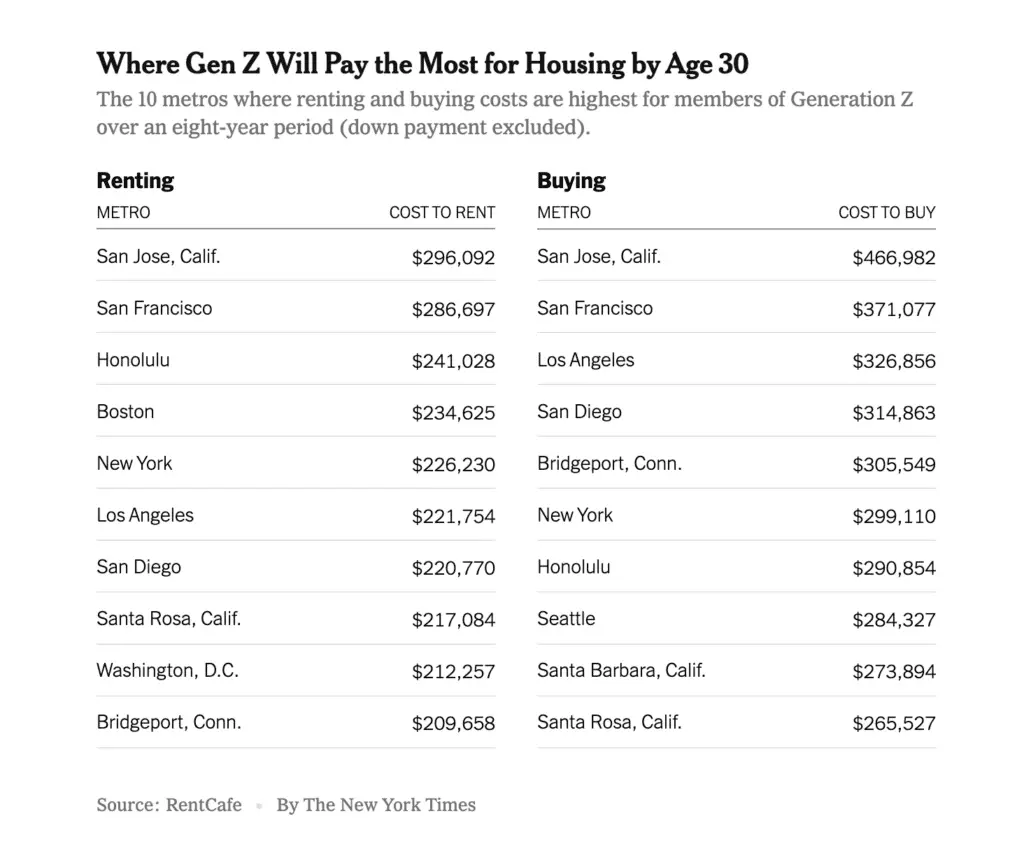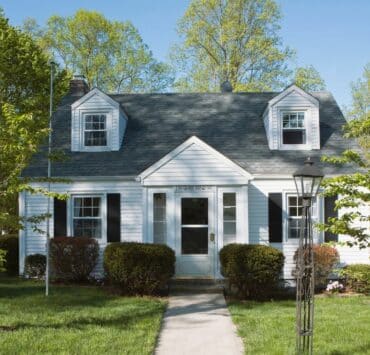As Generation Z steps into the housing market, they’re facing a landscape altered by economic shifts and technological advancements. Unlike the millennials before them, the youngest homebuyers are finding new ways to adapt.
Affordability: A Generational Balancing Act
The financial burden of housing is a universal challenge across generations. A study by RentCafe reveals that, adjusted for inflation, Gen Z will have spent an average of $145,000 on rent by age 30. In contrast, millennials spent $127,000. However, Gen Z’s higher earnings balance the scales, dedicating a similar income percentage to housing costs.
Owning vs. Renting: Gen Z’s Strategic Play
When it comes to owning a home, Gen Z might have an edge. With the cost of homeownership for Gen Z estimated at $165,000 versus millennials‘ $172,000, the younger generation can allocate less of their income to housing. This financial relief is particularly significant given the competitive nature of today’s real estate market.

Geographic Differences: The Costly Coasts
Location plays a crucial role in housing costs, with coastal cities like San Jose and San Francisco leading the charts for both renting and buying. Yet, Gen Z faces these steep costs with a fresh perspective, often choosing to rent in high-cost areas, which can lead to substantial savings over time.

While Gen Z navigates a market with its own set of challenges, they hold a nuanced advantage over millennials. With higher earnings and strategic choices in renting versus buying, Gen Z is writing a new chapter in the story of homeownership.

FAQs About Gen Z Housing Situation
Is it cheaper for Gen Z to rent or buy?
It depends on the location, but in high-cost areas like San Jose, renting can save them significantly.
How do housing costs for Gen Z compare to millennials?
Gen Z spends more on rent, but their higher income means they spend a similar portion of their earnings on housing.
Why might Gen Z have an advantage in the housing market?
They benefit from higher incomes and often make financially strategic decisions in high-cost living areas.
Related posts:
 Affordable Rental Provider Repays $710K to Arlington County
Affordable Rental Provider Repays $710K to Arlington County
 Decline in Home Prices: Anticipating a Shift in 2024
Decline in Home Prices: Anticipating a Shift in 2024
 Maryland Governor Legislative Agenda: Military Families, Housing, and Public Safety in 2024
Maryland Governor Legislative Agenda: Military Families, Housing, and Public Safety in 2024
 Nashville’s Zoning Bills for Middle-Income Housing Spark Contentious Debate
Nashville’s Zoning Bills for Middle-Income Housing Spark Contentious Debate
 New York’s Affordable Housing: Innovative Solutions Without Tax Hikes
New York’s Affordable Housing: Innovative Solutions Without Tax Hikes



